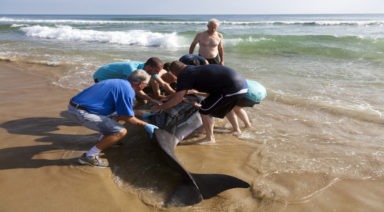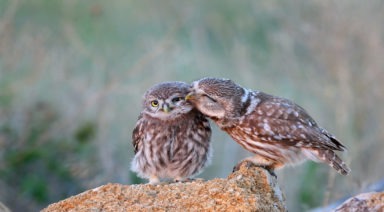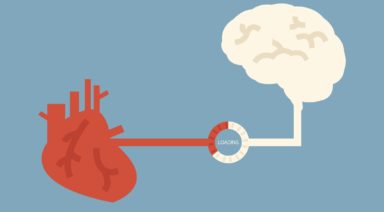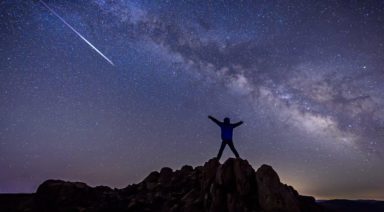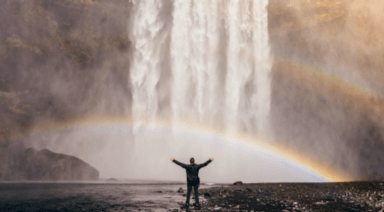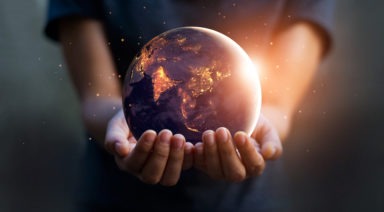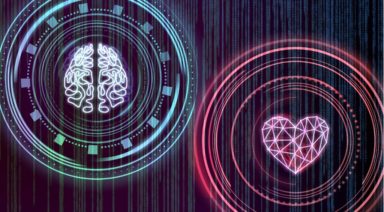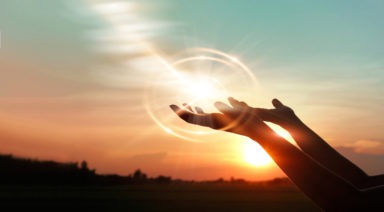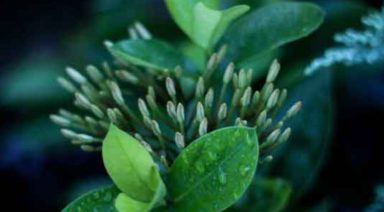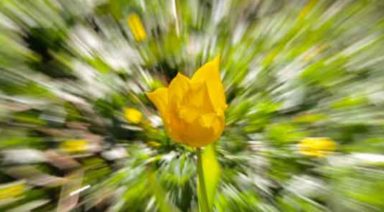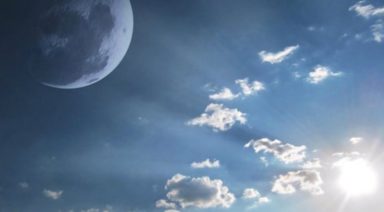What Does Gaia Mean?
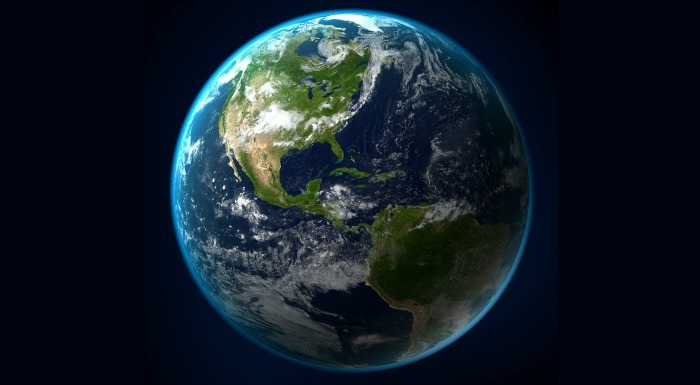
Quite simply, the definition of Gaia is life. She is all, the very personification of the earth. She is the mother goddess, inhabiting the planet, and offering life and nourishment to all her children. In ancient civilizations, she was revered as the mother, nurturer, and giver of life. She goes by many names, including Gaea, Ge, Mother Earth, Terra Mater to the Romans, Magna Mater, and more recently, Mother Nature. Each of these names is a testament to her enduring presence as the life-giver, the ultimate nurturer, and the architect of existence.
Gaia, often voiced as “GUY-uh,” holds the essence of existence within its syllables. This name, steeped in the rich tapestry of ancient Greek mythology, serves as a bridge to the Earth itself, embodying the very spirit of the planet. The etymology of Gaia, or Γαῖα in the original Greek, translates to ‘earth’ or ‘land,’ a fitting homage to her role as the primal Earth Mother. The term has since transcended its mythological roots, evolving into a symbol for the interconnectedness of all life on Earth, particularly within environmental and ecological contexts.
As we delve into the myriad ways she manifests across cultures and epochs, we embark on a journey to deepen our connection with the world around us, exploring the profound legacy of Gaia’s nurturing embrace.
The Universal Earth Goddess: Gaia and Her Global Namesakes
Every culture has its version of the Goddess of the Earth. In some cases, she predates writing: ancient, pre-linguistic references to her have been found, alongside shrines, statues, and paintings of her in every corner of the globe. She is the first goddess, the primeval one, the creator of all life, and the fullness of her legacy is still being resurrected after patriarchal suppression. This universal reverence for the Earth Goddess, spanning continents and millennia, illustrates a shared human acknowledgment of the Earth’s nurturing capacity and sacredness.
In Greece, she was called Gaia, while the Incas knew her as Pachamama. Among the Norse, she was known as Jörð, the daughter of Nótt and the embodiment of the land itself. Across the vast expanse of the Pacific, the indigenous Maori of New Zealand honored Papatūānuku, the Earth Mother, who gave birth to all nature with the Sky Father, Ranginui.
These diverse names and narratives underscore a common theme: the Earth as a living, breathing entity deserving of respect and protection. The global tapestry of Earth Goddess worship not only highlights the rich cultural diversity of this veneration but also serves as a poignant reminder of humanity’s universal bond to our planet. It’s a call to remember and revive these connections, understanding that the care of our Earth is both an ancient obligation and a pressing contemporary necessity, as vital now as it was to our ancestors.
The Paleolithic Venus: Rediscovering the Earth Mother
The Paleolithic Venus figurines, scattered across Europe, are emblematic of ancient societies’ reverence for the feminine Earth Mother—a veneration somewhat obscured by the passage of time. These figurines, often robust and gravid, symbolize fertility, motherhood, and the generative powers of nature itself. They serve as silent yet eloquent testimonials to a time when the worship of the Earth’s nurturing essence was widespread, deeply ingrained in the fabric of everyday life.
Modern excavations and scholarly endeavors have begun to peel back the layers of history, revealing a complex tapestry of belief systems that placed the Earth Mother at their core. Through the meticulous study of these artifacts, historians, archaeologists, and artists are gradually reconstructing the narratives of these ancient peoples. This resurgence of interest not only honors the goddess’s legacy but also rekindles a connection to our collective past, where the Earth was revered as the ultimate source of all life and sustenance.
Gaia: The Goddess of Ancient Greek Mythology
Within the pantheon of ancient deities, Gaia’s presence was unparalleled, embodying the very essence of primordial creation and maternal might. Her name, evoking the boundless strength and nurturing spirit of the Earth, was revered across the ancient world. To the Greeks, Gaia was the ultimate goddess of raw, maternal power. In the beginning, there was chaos, nebulous ethers waiting to take form. This primordial landscape awaited direction; it was then that the spirit of Gaia arrived to give structure to the formless and the Earth was conceived.
The Mother of Life and the Divine Heavens
In Greek mythology, Gaia stands as the quintessential embodiment of the Earth itself, revered as the primal Mother Earth goddess. From her fertile womb sprung the very fabric of the cosmos: she gave birth to Uranus, the sky, who would become both her husband and her equal; Pontus, the ancient, unfathomable sea; and the towering Titans, precursors to the Olympians. Among her offspring were the Titans – Cronus and Oceanus, the Cyclops with their single, piercing gaze, and the hundred-handed giants, each embodying forces of nature and the universe’s nascent power.
Her influence extended beyond mere creation. Gaia’s union with Uranus spawned the first pantheon of Greek deities, setting the stage for the saga of the gods and goddesses that would dominate Greek myth. Yet, it was through her guidance that Zeus, her grandson, ascended to become the chief among the Olympian gods. Her wisdom and might were echoed in the tales of her descendants, including Athena, the Greek goddess of wisdom, born of Zeus’s head, further cementing her legacy within the mythological hierarchy. Gaia’s story, interwoven with the elements of creation, celestial phenomena, and divine lineage, marks her as a central figure in the tapestry of Greek mythology and the subsequent origin of Olympus, embodying the Earth’s life-giving force and maternal strength.
A Return to Divine Feminine: Gaia’s Resurgence in Modern Consciousness
As the prevalence of gods and goddesses in the 19th and 20th centuries faded away, so did history books’ tales of female pharaohs, women scientists, and Amazon warriors. History is kept by the victors—and the victors are most often men. This left a void in the collective consciousness and Gaia was relegated to mythology alone. With the convergence of feminism in the 1970s, all that changed when a groundbreaking pro-female establishment was founded, providing a new understanding of how our planet operates.
In the wake of the 20th century, Gaia’s image was revitalized by the fusion of feminism and environmentalism. This revival spotlighted the divine feminine, with Gaia symbolizing strength, nurturing, and interconnectivity. Feminism’s quest to amplify silenced voices paralleled environmentalism’s rise, especially after “Silent Spring,” casting Gaia as an emblem of ecological awareness and unity. This modern embrace of Gaia has galvanized a collective push towards environmental respect and sustainability, intertwining spiritual reverence with activism for a balanced, thriving planet.
The Gaia Hypothesis: Earth as a Self-Regulating Living System
In 1970, chemist James Lovelock and his research partner, biologist Lynn Margulis introduced the Gaia Hypothesis, positing Earth as a self-regulating, living being capable of maintaining the conditions necessary for life. Initially met with skepticism, the hypothesis challenged the prevailing view of Earth as a passive backdrop to life, proposing instead that life actively participates in shaping the planet’s environment. This idea of Earth as a cohesive system, where biological processes interact with physical and chemical ones to maintain life-sustaining conditions, was revolutionary. The scientific community’s initial resistance stemmed from the hypothesis’s implication that Earth’s biosphere functions almost like a single organism, a concept that seemed to blur the lines between life and non-life.
Gaia Theory: Understanding Earth’s Intelligent Systems
Building on their hypothesis, Lovelock and Margulis’s work revealed how Earth’s myriad components—its atmosphere, biosphere, geology, and oceans—integrate to form a complex, self-regulating system. This system, guided by the interactions between living organisms and their environment, adjusts and responds to changes in a way that sustains life. For example, the regulation of Earth’s atmosphere by photosynthetic organisms, which convert carbon dioxide into oxygen, demonstrates this symbiotic relationship. Such mechanisms underscore the planet’s capacity for self-regulation and balance, evidencing a level of systemic intelligence previously underestimated.
Gaia theory has since evolved from a controversial hypothesis to a foundational concept in Earth system science, inspiring further research into how Earth’s life-supporting systems operate. It has underscored the importance of viewing the planet as an integrated whole, where each component plays a critical role in maintaining the conditions for life. This holistic perspective has significant implications for environmental conservation, highlighting the delicate interdependencies that sustain the Earth and the impact of human activities on its ability to regulate itself.
Embracing Gaia Today: From Mythology to Modern Spirituality
Far beyond the mythological Gaia, the name has come to represent an all-loving, nurturing, and intelligent cosmic force that oversees life on Earth. The revival of goddess traditions has been instrumental in reintroducing the ancient wisdom of the Great Mother, affirming her role as a beacon of love and sustenance. Yet, engaging with Gaia’s legacy demands more than occasional environmental activism or annual Earth Day observances. It calls for a daily commitment to living in harmony with our planet, treating each interaction as a sacred opportunity to honor and preserve the intricate web of life Gaia sustains.
To foster a truly connected relationship with Gaia means to actively participate in the stewardship of Earth, recognizing and respecting the bounty she provides. This involves making conscious choices that reflect our understanding of the interconnectedness of all life forms and the impact of our actions on the planet’s health. By adopting sustainable practices, advocating for environmental protection, and cultivating a sense of reverence for the natural world, we can contribute to a future where both humanity and the Earth flourish. In doing so, we not only pay homage to Gaia’s enduring spirit but also embrace our role as caretakers of the beautiful, dynamic planet she embodies.
It's Time to Ask Whether We're Buying Ethically Mined Crystals

Crystals have become a hot commodity, as an increasing number of people are realizing their multi-faceted healing benefits. This has come to include celebrities, those trying to capitalize off their demand, and the average Joe. But when a natural resource becomes so valued, it’s probably time to start asking whether we’re buying ethically mined crystals or conflict stones.
Buyers and sellers of gems and minerals converge annually in Tucson, Ariz. for arguably the largest convention of its kind. There, minerals are brought in from across the globe, sold to private collectors, or shop owners around the country. Attendees find large specimens, themed displays, and some of the most beautiful examples of just about every gem and mineral known to man.
But where do they all come from and how do they get there? That was a question The New Republic recently asked, wondering whether the acquisition of healing crystals should be viewed through the same lens as conflict diamonds.



